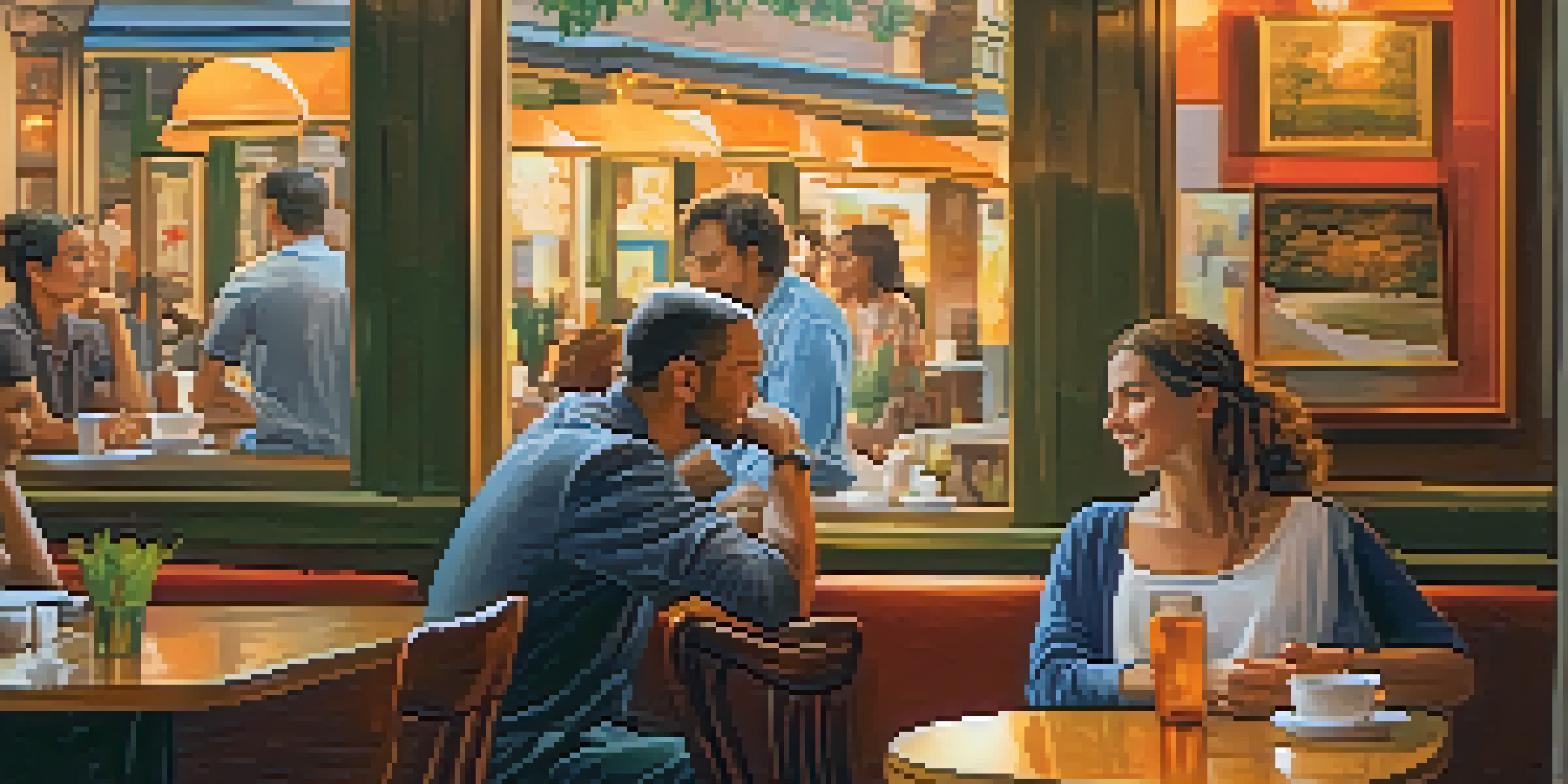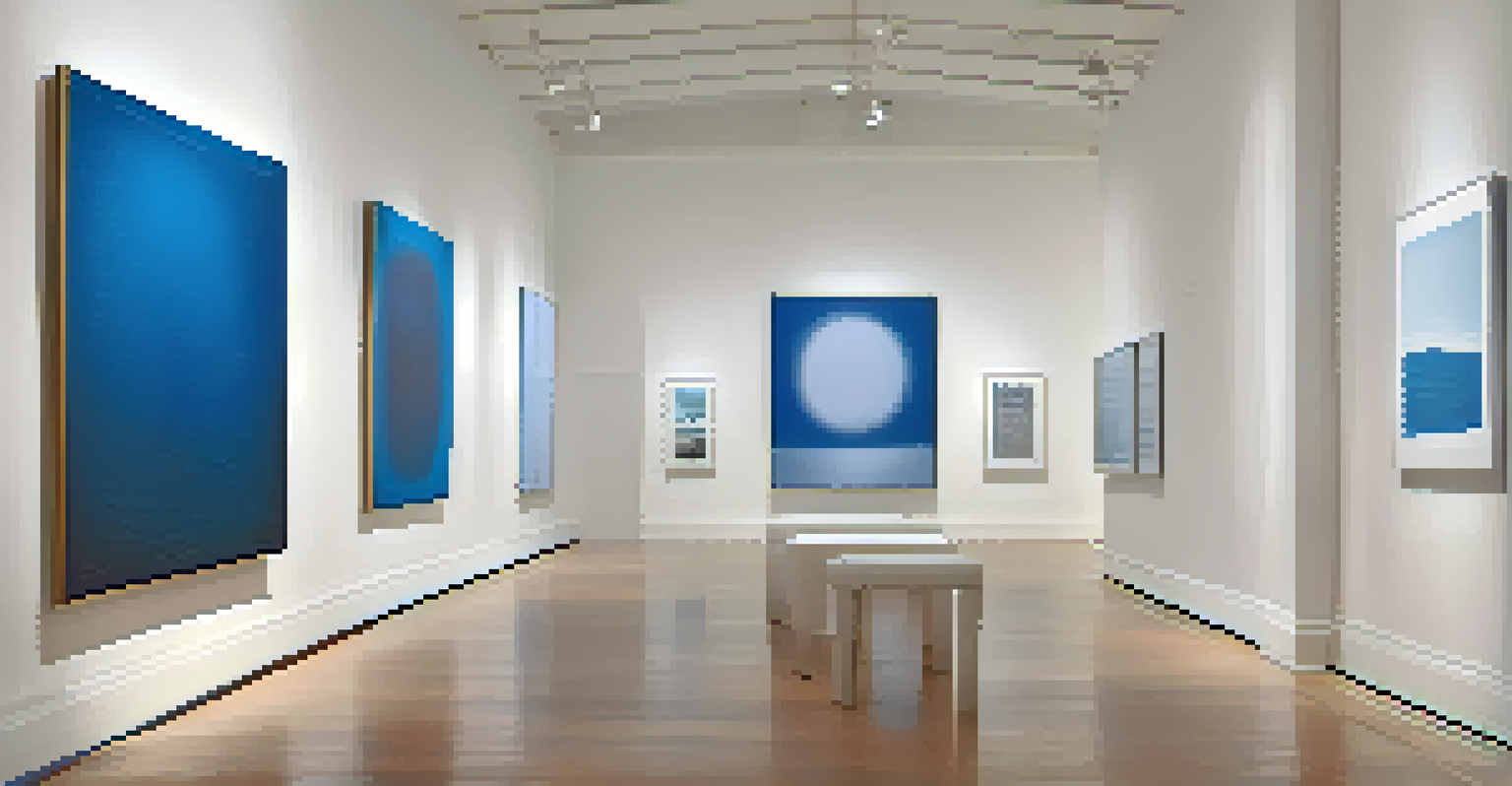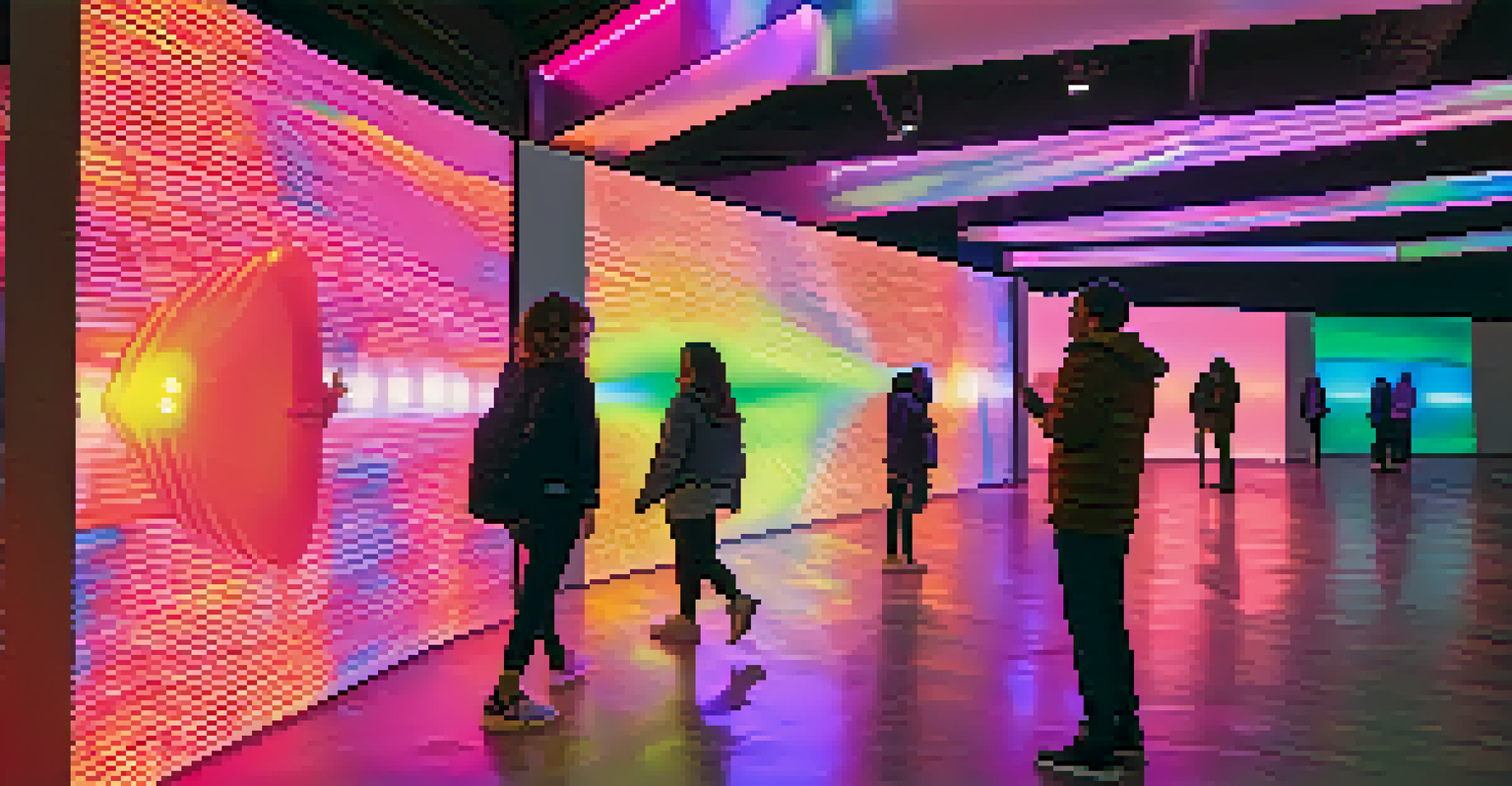The Influence of Artificial Light on Color in Art

Understanding Color Theory and Light
At its core, color theory explains how colors interact and the effects they have on each other. When it comes to art, light plays a crucial role in how we perceive these colors. For instance, under natural sunlight, colors appear vibrant and true to their actual hue, but artificial lighting can significantly alter that perception.
Color is the keyboard, the eyes are the harmonies, the soul is the piano with many strings.
Different types of artificial light, like LEDs, fluorescent, or incandescent bulbs, emit varying color temperatures, which can shift how colors are seen. A warm light can make reds and yellows pop, while cooler lights can enhance blues and greens. This variance is essential for artists to understand as they choose their materials and lighting conditions.
Moreover, artists often experiment with light sources to achieve desired effects in their work. By manipulating these light sources, they can create moods, highlight specific elements, or even evoke emotions, demonstrating the profound link between light and color in art.
The Historical Context of Artificial Light in Art
The use of artificial light in art isn't a modern invention; it has historical roots dating back to the Renaissance. Artists like Caravaggio famously used chiaroscuro, a technique that contrasts light and shadow, to create drama and depth in their paintings. This manipulation of light was revolutionary and showcased the power of artificial illumination.

As technology progressed, the introduction of gas lamps and electric lights expanded the possibilities for artists. Impressionists, for instance, began to paint en plein air, or outdoors, but they also experimented with how artificial lights affected their perception of color during evening scenes. This exploration led to stunning captures of twilight and the effects of urban lighting.
Technology Shapes Artistic Expression
Advancements in lighting technology offer artists innovative ways to manipulate light and color, transforming viewer experiences and interactions with art.
In contemporary art, we see a continuation of this tradition, as many artists incorporate artificial light as a medium itself. Installations that use neon lights or projectors can transform spaces and challenge viewers' perceptions, illustrating how artificial light continues to influence artistic expression.
Artificial Light and Color Mixing Techniques
Color mixing is a fundamental skill for any artist, but the influence of artificial light complicates this process. For example, colors that look harmonious under one type of light may clash under another. Artists must consider the lighting conditions when mixing paints or selecting color palettes to ensure their intended vision is realized.
Light is the first element of design; without it, there is no color, form, or texture.
This complexity can be likened to cooking; a dish may taste different under various kitchen lights, just as colors can change depending on the light source. As artists mix pigments, they often have to predict how these colors will interact under the final display light, making the process both an art and a science.
Therefore, understanding the interplay between artificial light and color mixing is crucial for artists. It enables them to make educated choices that enhance their work and ensure that the colors resonate with viewers, regardless of the lighting under which the art is viewed.
Psychological Effects of Light on Color Perception
Artificial light not only affects how we see colors but also influences our emotional responses to those colors. Warm lights can evoke feelings of comfort and happiness, while cooler lights might instill calmness or even melancholy. Artists harness this psychological impact to evoke specific feelings through their work.
Consider a cozy café painted in warm hues and illuminated by soft, golden light; it invites relaxation and conversation. In contrast, a gallery showcasing blue-toned artworks under bright, white lights may create a more clinical or contemplative atmosphere. This interplay between light, color, and emotion is a powerful tool for artists.
Color and Light Interplay
The relationship between artificial light and color significantly impacts how artists perceive and create their work.
By carefully selecting both color and light, artists can guide viewers through an emotional journey. This synergy illustrates how artificial light does more than illuminate; it shapes our perception and experience of art.
The Role of Technology in Artificial Lighting for Art
Advancements in technology have revolutionized how artists use artificial lighting. LED technology, for instance, allows for a wide range of color temperatures and intensities, giving artists more control over how their work is viewed. This adaptability has made it easier for artists to experiment with lighting effects in their creations.
Moreover, smart lighting solutions enable artists to change the color and intensity of lights with ease, creating dynamic displays that can evolve over time. Imagine an art installation that shifts in hue as you walk past—this interactive approach enhances the viewer's experience and engagement with the artwork.
As technology continues to advance, so too does the potential for innovative artistic expression. Artists are now able to push boundaries and explore the fascinating relationship between light and color in ways that were previously unimaginable.
Case Studies: Artists Who Utilize Artificial Light
Many contemporary artists have embraced artificial light as a key component of their work. For example, artist Dan Flavin is famous for his minimalist light installations using fluorescent tubes, transforming spaces into immersive experiences. His work challenges the viewers' perception of color and space, highlighting the significance of artificial lighting.
Another notable artist, Olafur Eliasson, creates installations that play with light and color, often blurring the lines between the natural and artificial. His use of artificial light transforms environments and invites spectators to reconsider their perceptions of color in relation to their surroundings.
Historical Use of Artificial Light
From the Renaissance to contemporary art, artists have utilized artificial light techniques to enhance depth and emotional impact in their creations.
These artists exemplify how artificial light can redefine artistic expression. By incorporating light into their work, they not only change the visual experience but also provoke thought and dialogue around the nature of color and perception.
Future Trends: Artificial Light and Art
As we look to the future, the relationship between artificial light and color in art is likely to evolve even further. With the rise of augmented reality (AR) and virtual reality (VR), artists have new tools at their disposal to create immersive experiences that manipulate both light and color in innovative ways. This opens up a whole new realm of possibilities for artistic exploration.
Imagine stepping into a VR environment where colors shift dynamically based on your movements and interactions with light sources. This level of engagement could transform how we experience art, challenging traditional notions of static pieces.

Furthermore, as sustainability becomes increasingly important, artists may seek eco-friendly lighting solutions that maintain the vibrancy of color while reducing energy consumption. This trend could lead to exciting new materials and techniques that enhance the interplay between artificial light and color in the art world.